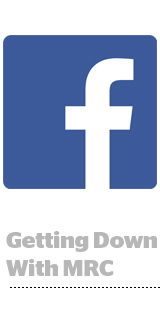
Behind the Cambridge Analytica headlines, Facebook on Thursday completed the first phase of its ongoing three-part MRC audit.
Phase one was an inspection of served impressions on Facebook and Instagram, including display and video across desktop, mobile web and in-app.
Before the Cambridge Analytica data-sharing scandal broke, Facebook was being pushed to be more open with its data. Post-scandal, just the opposite is true. Now, Facebook has to strike a balance between the two if it wants to appease advertisers, users and regulators.
“We recognize the industry’s desire for more independent third-party validation,” Brad Smallwood, Facebook’s VP of marketing science, said in an emailed statement. “This is welcome progress.”
It’s been a long road since Facebook first agreed to an independent audit in February 2017, and there’s still a lot of boxes to tick before the process is complete.
Phase one was about setting the foundation for standardized measurement on Facebook.
“If you think of viewability as viewable impressions over served impressions, this is about validating the denominator,” George Ivie, the MRC’s CEO and executive director, told AdExchanger in August.
Phase two involves validating the API connection used by Facebook to share data with its third-party measurement partners, which include Moat, Integral Ad Science, DoubleVerify, comScore and Meetrics.
This work is already in progress and isn’t affected by the restrictions Facebook put in place Wednesday for several of its APIs.
Phase three, which hasn’t kicked off yet, will include accreditation for served ad impressions on Audience Network, accreditation against the MRC’s sophisticated invalid traffic guidelines and an audit of how viewable video impressions on Facebook’s platforms compare with the MRC’s current standard for video. The standard dictates that at least 50% of pixels must be in view for at least two consecutive seconds.
The MRC is even considering upping the viewability threshold to 100% and adding duration weighting for cross-media measurement. The council issued a call for research proposals in March.
That could prove awkward for Facebook, which was called out last year for low video viewability rates – in some cases between 20% and 30%. But in Facebook’s view, low viewability doesn’t mean less value for advertisers.
Facebook argues that an ad in a news feed environment can make an impression even if just a small portion of the pixels are visible on a user’s screen for less than a second.
Not all advertisers agree, of course. To placate them, Facebook does provide the option to only buy on 100% in-view impressions.
But obsessing over viewability rates misses the point of running ad campaigns, which is to drive outcomes, said Jonathan Lewis, Facebook’s manager of measurement and identity products, in a previous interview.
“We think about our viewability partnerships as one input into the larger narrative around measurement – rather than losing out on value because of focusing too much on a specific standard,” Lewis said.
This post was syndicated from Ad Exchanger.

More Stories
The Winners and Losers of Google’s Big Cookie Reversal
Pew Survey Shows Education Level and Party Affiliation Tied to Views on Freedom of the Press
Google Tops Q1 Estimates with $90B in Revenue Amid Antitrust Turmoil